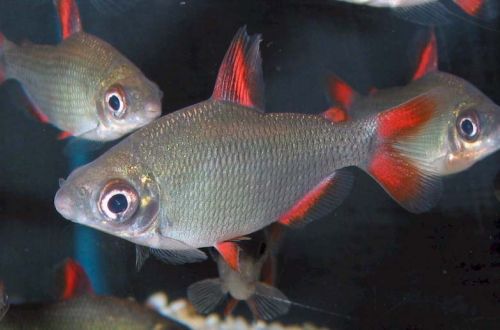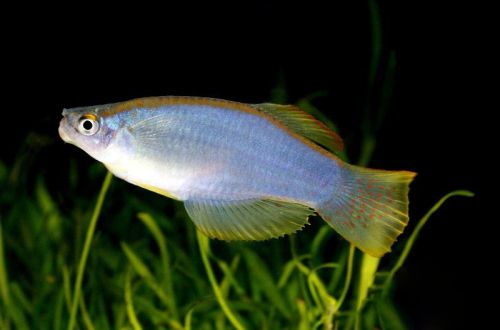
Distichodus redfin
The red-finned distichodus, scientific name Distichodus affinis, belongs to the Distichodontidae family. A large peaceful fish, which can hardly be called beautiful, rather ordinary, therefore it is often used as an addition to the general aquarium community, which is also facilitated by successful adaptation to various conditions of detention.

Contents
Habitat
A representative of the African continent, it is widely distributed in numerous reservoirs in the lower and central parts of the Congo Basin, which is on the territory of the modern states of the Republic of the Congo and the Democratic Republic of the Congo.
Brief information:
- The volume of the aquarium – from 110 liters.
- Temperature – 23-27°C
- Value pH — 6.0–8.0
- Water hardness – soft to medium hard (5-20 dGH)
- Substrate type – any sandy
- Lighting – moderate
- Brackish water – no
- Water movement – moderate or weak
- The size of the fish is up to 20 cm.
- Nutrition – any with herbal supplements, prone to plant damage
- Temperament – peaceful
- Content both individually and in a group
Description
Adults reach a length of 20 cm, but grow somewhat smaller in an aquarium. There are several very similar varieties of Distichodus, which have a silver color and red fins. The differences lie only in the size of the dorsal and anal fins. Since it is extremely difficult for non-professionals to distinguish them, therefore, they are sold under the general name Distichodus redfin.
Food
Accepts most popular foods in the aquarium trade in dry, fresh or frozen form. The main condition is the presence of plant components that make up about half of the entire fish diet, for example, you can serve spirulina flakes, blanched peas, pieces of the white part of spinach, lettuce, etc. Prone to eating ornamental plants in the aquarium.
Maintenance and care, arrangement of the aquarium
You will need a large spacious tank from 110 liters per one or two fish. In the design, decor elements such as fragments of rocks, pieces of snags, a substrate of coarse sand or fine gravel are used. When choosing plants, it is necessary to take into account the gastronomic features of Distichodus, only Anubias and Bolbitis will remain relatively intact, the rest will most likely be eaten.
Optimal conditions of detention are characterized by a moderate or weak current at an average level of illumination, a comfortable temperature range ranges from 23–27 ° C. The pH and dGH parameters are not so critical and fluctuate within wide acceptable ranges.
A set of equipment is selected taking into account the above conditions and usually consists of a filtration and aeration system, a heater and several lamps built into the lid of the aquarium. In the case of well-chosen equipment, maintenance is reduced only to periodic cleaning of the soil from organic waste and replacing part of the water (10–15% of the volume) with fresh water once every one or two weeks.
Behavior and Compatibility
A peaceful non-aggressive fish, but potential size limits the number of compatible species. Keeping is allowed with representatives of catfish, some American cichlids and other characins of similar size and temperament. In an aquarium, it can be kept alone or in a small group, and if possible (in this case a huge tank is required), then in a large flock.
Breeding / breeding
At the time of this writing, there was no reliable information about successful experiments in breeding Red-finned Distychodus in home aquariums. Fish are commercially bred mainly in Eastern Europe, or, much less often, caught in the wild.





